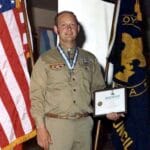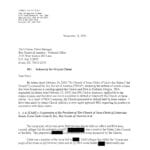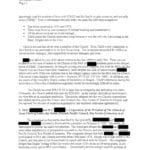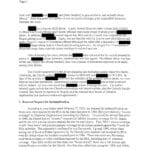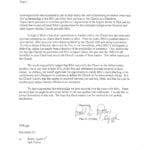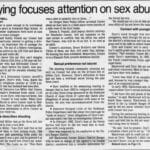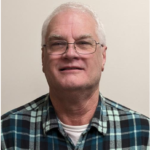 LDS positions: Scout leader,
LDS positions: Scout leader,  During crime: Scout leader,
During crime: Scout leader, - LDS mission:
 unknown
unknown  Alleged:
10 or more victims, Multiple victims,
Alleged:
10 or more victims, Multiple victims,  Criminal case(s): Convicted, Jail, Plea deal, Pleaded guilty, Probation,
Criminal case(s): Convicted, Jail, Plea deal, Pleaded guilty, Probation,  Civil case(s): Lawsuit v. LDS church, Settlement,
Civil case(s): Lawsuit v. LDS church, Settlement,  Alleged failure to report
Alleged failure to report-
 Church paid $200,000
Church paid $200,000  Alleged church actions: Disfellowshipped, Excommunicated,
Alleged church actions: Disfellowshipped, Excommunicated, - AKA Ed Dyer
 updated Oct 29, 2025 - request update | add info
updated Oct 29, 2025 - request update | add info
Over a 28-year period starting in the 1950s, Mormon church member Edwin Ellis Dyer molested up to 15 boys. During some of those years, Dyer was their Boy Scout leader.
Floodlit has not been to find Ed Dyer’s name in publicly released records from the Boy Scouts of America (BSA) “perversion files” (its secret records on alleged molesters).
In the 1970s or 1980s, the Mormon church learned of abuse allegations against Dyer.
Church officials asked Dyer to resign as scoutmaster in 1982 and later disfellowshipped him, but did not tell police or civil prosecutors.
The church excommunicated Dyer in 1985, after abuse allegations came to light.
On Oct. 8, 1985, Dyer pleaded guilty to two counts of second-degree misdemeanor sexual abuse involving juveniles under 18.
He was sentenced to just 20 days in jail and three years probation.
Five days later, a 17-year-old victim of Dyer, who was present at the sentencing, shot Dyer in the chest with a sawed-off shotgun, outside Dyer’s home.
In 2003, the church’s risk management director, Paul Rytting, wrote to a BSA executive.
Rytting said the church had paid another victim of Dyer $200,000 to drop a civil action against it and the BSA.
The church also spent $58,151.36 in legal fees investigating and defending the legal claim.
Rytting wrote, “In the current child abuse environment, we view this as an excellent resolution.”
Floodlit was the first organization to report on that settlement.
In 2014, the BSA settled a lawsuit filed by a former Eugene, Oregon Scout who had sought over $5 million. The plaintiff claimed that the BSA failed to protect him from Dyer. The Mormon church was not a named defendant in the suit, which was filed in 2011.
Have any info on this or other Mormon sex abuse cases? Contact us.
As an independent newsroom, FLOODLIT relies on your generous support to make thousands of reports of sexual abuse in the Mormon church available. If you find our work helpful, please consider donating! Thank you so much for helping us shine a light.
Sources
- A murder charge has been filed against a 17-year-old...,
- Conner sees double betrayal by sex abuser, legal system,
- Outdoor Life,
- We just found $1,268,835.62 more in Mormon church child sex abuse costs,
-
1. A murder charge has been filed against a 17-year-old...
BEND, Ore. -- A murder charge has been filed against a 17-year-old youth in the shooting of a former Boy Scout leader convicted of sexually abusing him.
The Deschutes County District Attorney's office filed the charge Thursday against Louis R. Conner along with a motion to remand the youth to stand trial as an adult.
He does not turn 18 until October.
Edwin Dyer, 50, a retired Forest Service worker, was shot to death outside his Redmond home on Wednesday. Dyer pleaded guilty last fall to two counts of second-degree sexual abuse involving juveniles under 18.
A week ago -- with Conner looking on in the courtroom -- Dyer was sentenced to 20 days in jail beginning Feb. 15, placed on three years probation and ordered to pay $1,440 to the court.
Dyer also was ordered to refrain from any contact with any youth under 18 unless another adult was present. Authorities said one of the youths involved in the charge was Conner.
Neighbors said Dyer was a longtime member of the Church of Jesus Christ of Latter-day Saints and a former Boy Scout troop leader.
Baker County Circuit Judge William Jackson, filling in for other Deschutes County judges who were out of town, held a 2 hour detention hearing and ordered that Conner remain held at the juvenile detention facility in Klamath Falls.
-
2. Conner sees double betrayal by sex abuser, legal system
[Floodlit note: our apologies - we don't currently have a paid subscription to Newspapers.com, so this is the best we can do. There are two articles related to Ed Dyer on the same newspaper page, and their text sometimes runs together in a confusing way because of the limitations of Newspapers.com's OCR system.]
AUGUST 4M THE OREGONIAN, SUNDAY, 3, 1986 The L. RASMUSSEN Susan Conner and her son, Louis, discuss the events that led to his shooting of the man who was first his friend and later his abuser. Louis is undergoing counseling in a Bend program. Conner sees double betrayal by sex abuser, legal system I CONNER, from Page B1. bly said a dozen times, 'I ought to blow his brains Ed had told me he wanted to help me raise my boys, that Louis Deeded a father.
He had been brainwashing me with his lies." She and her son agreed that the" truth had to come out, that -if necessary they would endure a trial and Louis Conner would testify in court against Dyer. But when Conner decided to talk, his innocence crashed headlong into the system of justice. These are the realities of the system: On Oct. 8, 1985, the day before Conner's 17th birthday, Dyer pleaded guilty to two misdemeanors involving only mutual masturbation. In a plea bargain arrangement, Deschutes County District Attorney Tom Howes agreed to recommend concurrent sentences and cease investigation of other incidents.
Roy Miller, the deputy district attorney handling the case, told the Conners that the man who had abused Louis Conner might not go to jail because prisons in Oregon are so overcrowded. Miller was the same attorney who had prosecuted Dyer. The Conners' attorney Steve' Tiktin, explained that the 'court might keep longer jurisdiction over Dyer if it put him on probation. If he were sent to prison, the attorney said, he would be paroled so quickly the court would lose authority." Increasingly frustrated, Susan Conher began' her own' She learned of another boy at the Forest Service who had been molested by Dyer. She learned that in 1982, Dyer had resigned as scoutmaster of a Redmond troop sponsored by the Church of Jesus Christ of Latter-day Saints after church 1 members learned he had molested at least 10 members of the troop.
She persuaded the church to release its records of the former scoutmaster's history, including tapes of children explaining how they were molested. She learned that the Redmond police had heard about Dyer's problems with the Scout troop but had never asked the church for help. She called the district attorney's office and asked that Dyer's sentencing be postponed so additional evidence could be provided. The answer was no. "I cried all night," she said.
"I could've killed Ed. I felt like the whole world was against me." Conner was scared. He remembers thinking that Dyer probably wouldn't go to jail. He would be in the woods if Conner wanted to go there. Conner sawed off the stock and barrel of his 16-gauge shotgun.
The gun had been a gift from Dyer. "'He gave me the gun to shut me Sup," Conner said, "like a bribe. Every time I'd see that gun I'd think about it." Conner kept quiet. He was seeing a psychologist and everyone thought he was dealing very well with the trauma faround him. On Jan.
17, Conner and his mother twent to court for Dyer's sentencing. The boy was prepared for Dyer to get off without a jail term. But in court, it was revealed that the Forest Service had known Dyer swas a child abuser and let him retire learly. Dyer's wife and Dyer himself (acknowledged that he had molested boys for about 25 years. He said he was sorry he had hurt (the boys, but that they had initiated some of the sexual encounters.
District Judge Edward Perkins Dyer to 20 days in jail and called him "a fine fellow with a good work record who's done a great deal for the community." Dyer was ordered to stay from minors, but the judge refused to issue a restraining order pre: venting him from seeing the boys he had molested. Conner was devastated. On the day Dyer pleaded guilty, he had telephoned the Conner home and promised that he would see Conner when the boy turned 18. That birthday was less than 10 months away. On Jan.
22, five days after the sentencing, Conner left school, taking the sawed-off shotgun with him under his coat. He wanted to talk to Dyer, he said.
'Other boy' with story of By DEE LANE of The Oregonian staff Last January, when Edwin E. Dyer of Redmond was fatally shot by 17-year-old Louis Conner, attention focused on Dyer's history of sex abuse. Five days before the shooting, he had been sentenced to 20 days in jail for abusing Conner and someone referred to in news reports as "another boy" or "the other boy." Keith Powell is that other boy.
Powell, 17, has not received the attention Conner attracted, in part because he didn't shoot anybody; in part because no one knew who he was. "As far as I know the public is behind me," Powell' said in a recent interview. "They're behind 'the other but they just don't know who he is. I think they need to My know. lavang This way people will know.
People will be able to distinguish the users from the helpers. I'm real. and 'the other boy' isn't. 'The other boy' could be in somebody's imagination." Powell's mother, Judith Powell, AT agrees with his decision. wadi "Until we use names," she said, "until people understand that this happened to Johnny next door, it will keep on happening." Keith Powell was a member of the Boy Scout troop Dyer led at the Church of Jesus Christ of Latterday Saints in Redmond.
His father is dead, and like Conner he saw Dyer as a father figure. Dyer used Powell's close family and church relationships to manipulate the boy sexually. He told Powell he would be excommunicat- said. He wanted to ask him why he said the things he did in court. "I felt like shooting was the only way to make sure it didn't happen again.
I wanted to talk to him, and I felt he'd never answer and then I'd shoot him. I knew he'd answer that I was the problem." But Conner said that when he saw his former friend, Dyer said he couldn't talk. "I felt it was never going to be settled," Conner said. With Dyer's wife, Tona, watching, Conner pulled the gun from under his coat and shot the man he had emulated. Dyer died in his driveway.
Conner was arrested an hour later in a field about three-fourths of a mile from the Dyer home. Again, Conner had to deal with the system. Susan Conner went to see her son at the police station where he had been charged with first-degree murder. "What Ed did to me was worse than death," she recalls Conner saying. "I don't care what they do to me." What they did and what they tried to do proved to be two different things.
Roy Miller, the same deputy district attorney who had prosecuted Dyer, wanted Conner tried as an adult for first -degree murder. He could have been sentenced to life in prison. But a parade of psychologists testified that Conner was not a criminal, that he should not be tried as an adult, that he himself was a victim. In March, Judge John M. Cophenhaver ruled that Conner should not be remanded to adult court.
In the juvenile equivalent of a sentencing, he sent Conner to the ACORD program, a residential treatment program near Bend where he is to receive extensive counseling. (ACORD is an acronym for Achievement Center Community Outreach.) In six months, a day short of a year from the time he shot Dyer, Conner will be re-evaluated by the court. He will remain under court jurisdiction goes public abuse ed from the Mormon Church if anyone found out about the sexual activities. He threatened to harm other family members and said that if Powell told, no one would believe him. But Powell did tell.
A friend who sensed something was wrong asked him what was bothering him and Powell told how Dyer had abused him. "Then he asked me if I'd told my mom," Powell recalled. "And I said, 'No, but I Unlike Conner, Powell did tell his mother about Dyer. And because of that, he believes he was able to deal with the abuse better than Conner. Before he told, he said, he "didn't know what to do anymore.
I got to the point where I didn't want to live because I didn't want to go through this." Judith Powell didn't try.to make 2a her son agree to testify Dyer. Keith Powell believes the justice system treated the boys unfairly and that Conner. was justified in killing Dyer. veilex "I think he kind of got what he deserved," Powell said of Dyer. "The sentencing wasn't right.
It was like saying we boys were lying. "What did they do to him? Nothing. They slapped his hands with a ruler and sent him home and told him to be a good boy. It still upsets me that Louis has to pay for what Ed did. He shouldn't have to go through it.
If it's going to be anybody, it should be both of And it should be the other victims (Dyer) had over the last 23 years." "I had all this anger and I vented it," he said. "The anger I have now is against the legal system. I don't have to worry about him coming around when I turn 18. "Shooting him caused a whole bunch of problems for me, but it's a whole lot easier to deal with than the sexual abuse." Conner says he will make the best of the ACORD program, but he hopes to return home as soon as possible. He is not sure what he wants to do beyond high school.
He might study mechanics. He no longer wants to be a forest ranger. He has been buoyed by the support of others, many of whom were themselves childhood victims of sexual abuse. More than $11,000 has been donated to help defray his legal and counseling expenses. He and his mother have received about 200 letters, all supportive, all of which they have saved.
Conner hopes his story will help others who have been abused. He knows the statistics: One out of four girls and one out of seven boys are victims. He knows that the abusers usually are people the victims know well sometimes members of their families. And he believes strongly that the biggest danger of sexual abuse is in keeping quiet about it. "Silence," he says, "is the major problem of the whole thing." until he is 21.
Before he entered the ACORD progam last month, Conner said he no longer felt as desperate as he did when his mother met him at the police station six inonths ago. He said the killing wasn't justified, but he does not think of himself as a murderer. Through counseling, he has come to the conclusion that he was victimized twice once by Dyer and once by the legal system that failed to protect him from Dyer. "The sentence he got wasn't worth what I went through," he said. But he is no longer angry at Dyer.
He is no longer scared. Those feelings died with Dyer.
-
3. Outdoor Life
The New Yorker, August 11, 1986 P. 63
AMERICAN CHRONICLES about Ed Dyer, who lived in Central Oregon & through good works had become a valued member of the community. He had a job with the U.S. Forest Service at the ranger station in the town of Sisters, working in the nearby Deschutes National Forest. Eventually he and his wife and 4 children lived in the nearby town of Redmond. The family was active in the Mormon church. Ed became Scoutmaster of the church's Boy Scout Troop 26. As a Scoutmaster he was known for organizing & leading week-long backpacking trips that covered 50 miles on the wilderness trails. Years before his own boys were old enough to be Scouts & years after they'd gone on to other things, he remained active in the Scouts. It was not known that Ed was plagued with homosexual pedophilia-he could not control his sexual desire for young boys. One of the scouts in Troop 26 told his parents that Ed made a sexual advance to him. Ed was then asked by the church to resign as a Scoutmaster. The church leadership decided on disfellowship as a disciplinary measure. This is a sort of probation. The church authorities did not inform the civil authorities of the allegations against Ed. Later it was discovered that the incident was part of a pat tern that went back at least 25 years. Finally in late 1984, the church decided to excommunicate him. Two years after he resigned as Scoutmaster there was another incicent with a 15-year old boy, Louis Conner. A member of the church got no action when he reported Ed's problem to the local police so he turned to the State Police who started an investigation. Dyer pleaded guilty & was given a light sentence. Soon afterward he was shot to death by Louis, who in turn received a light sentence.
-
4. We just found $1,268,835.62 more in Mormon church child sex abuse costs
We (Floodlit.org) just discovered $1,268,835.62 more in Mormon church child sex abuse defense and settlement costs. Did you know Boy Scouts registration fees increased in the 1980s and 1990s to offset rising insurance premiums due in part to sexual abuse claims against the Mormon church?
In 2003, the LDS church’s director of risk management, Paul Rytting, wrote a four-page letter to Mark Dama, claim manager for the Boy Scouts of America.
Floodlit obtained a copy of the letter and is sharing it in full here (see images below).
In the letter, Rytting reminded Dama of “unwritten gentleman’s agreements at the highest levels of BSA and the Church” while requesting that the BSA pay for “at least 50% of the fees and settlement amounts” the church spent to defend and settle three child sex abuse claims.
In all, Rytting said, the Mormon church spent $1,075,000 to settle the claims, plus $193,835.62 to investigate and defend against them.
Calling the results “excellent resolutions,” Rytting cited Oregon’s “incredibly liberal statute of limitations” and counsel evaluation of one of the claims to be “several million dollars.”
Rytting wrote, “Our files reflect that during the 1980s and 1990s, scout registration fees increased in part to help defray the cost of increasing insurance premiums.”
He concluded, “There are ways that we might be able even further to aid one another and collaborate. I would like to pursue discussions to that end. We hope that these matters can be resolved to our mutual satisfaction.”
Floodlit will add these newly discovered abuse settlements to our growing public database about over 4,000 claims of sexual abuse in the Mormon church: https://floodlit.org/settlements
If you know of sexual abuse by a Mormon leader or active church member, or of failure to report abuse in the church, please report it: https://floodlit.org/report-abuse
Here is the letter.
page 1 of 4
page 2 of 4
page 3 of 4
page 4 of 4
Did you pay BSA fees in the 1980s or 1990s? What do you think about this letter?
Documents
Have docs or info? Add information

 Crime state:
Crime state:

